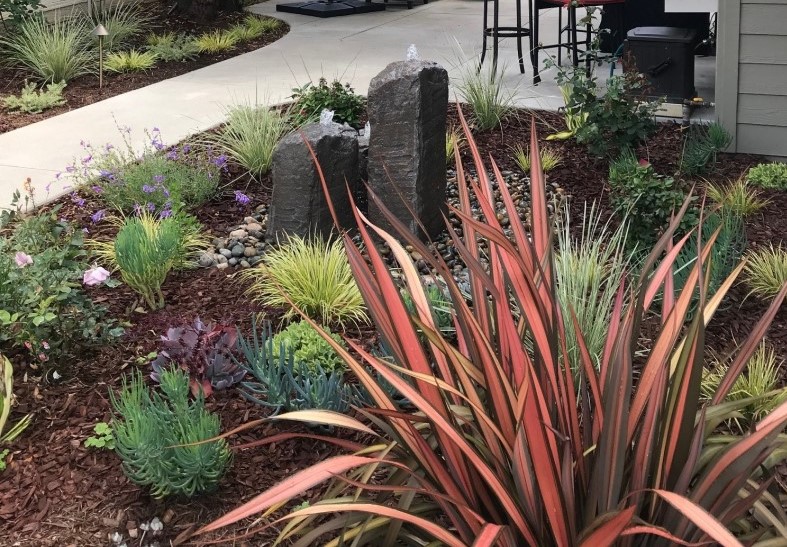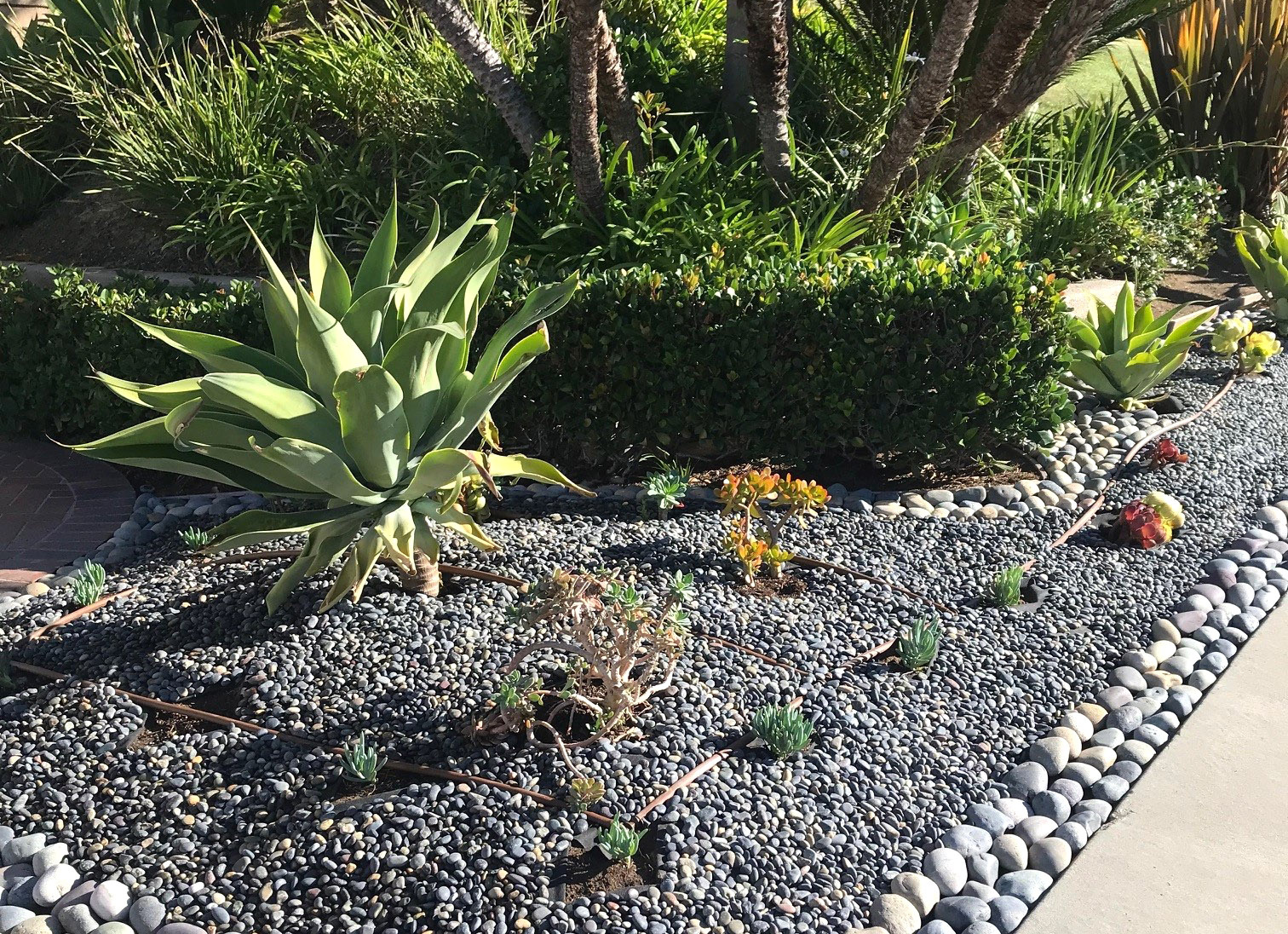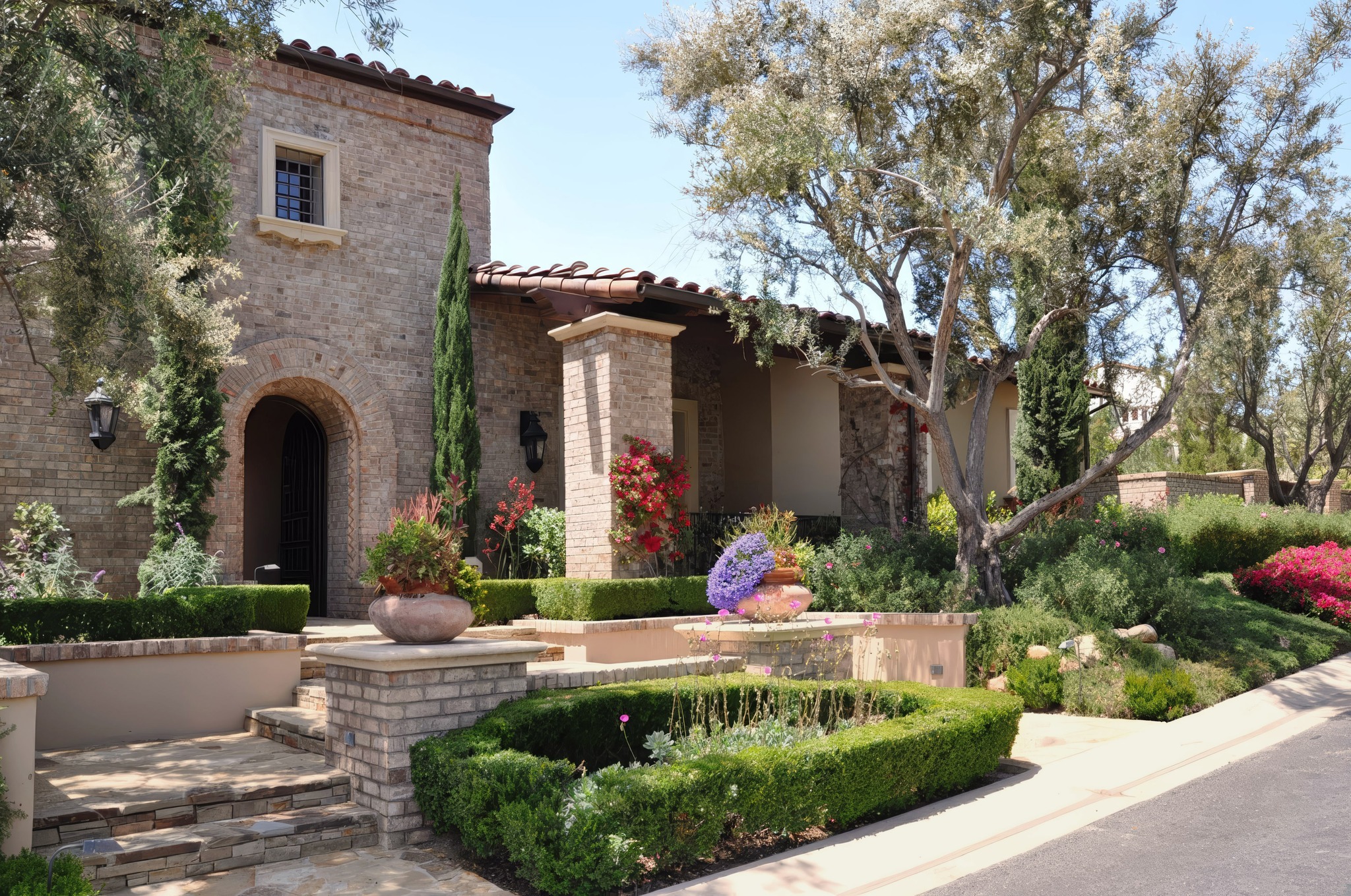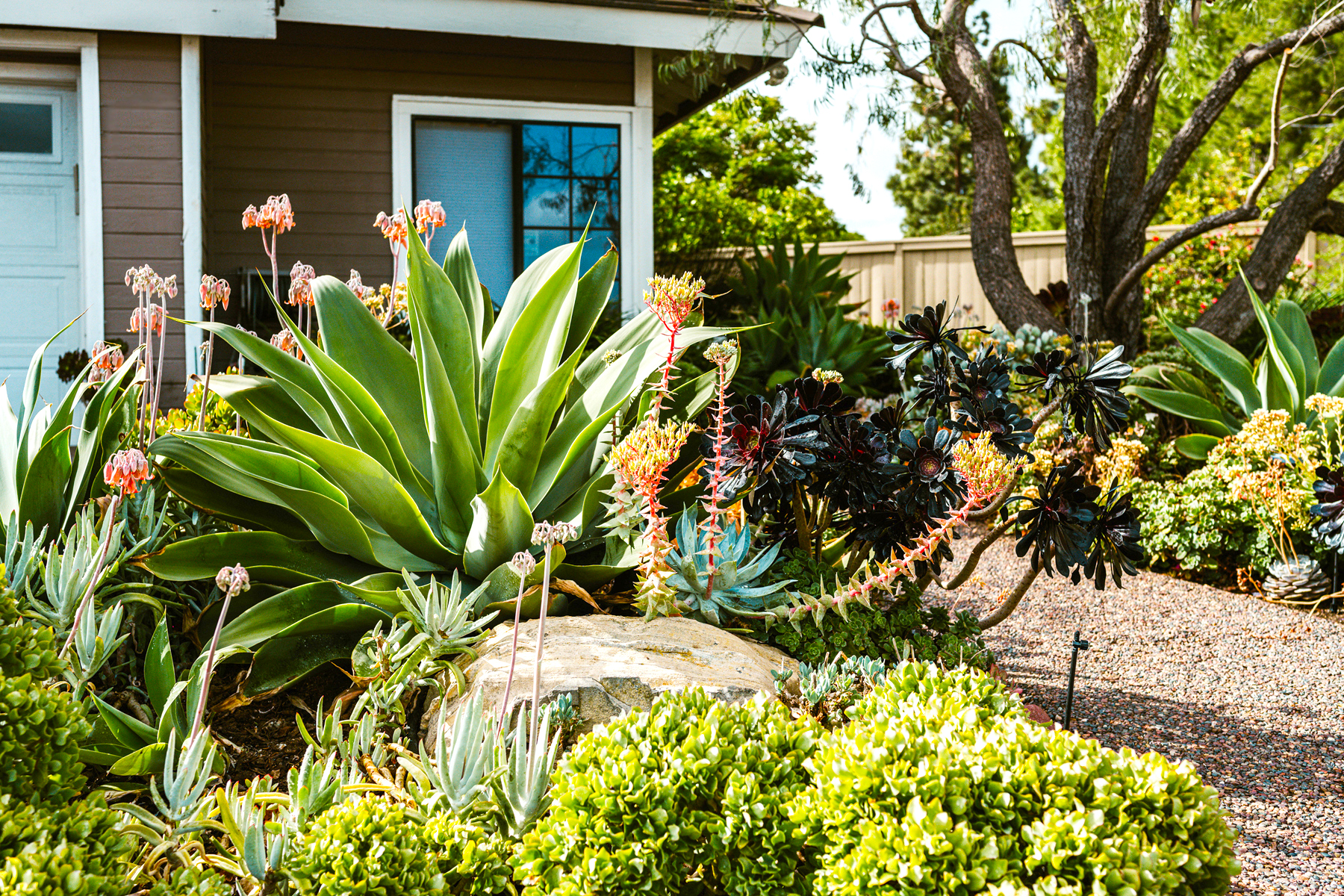Turf Replacement Rebate Program
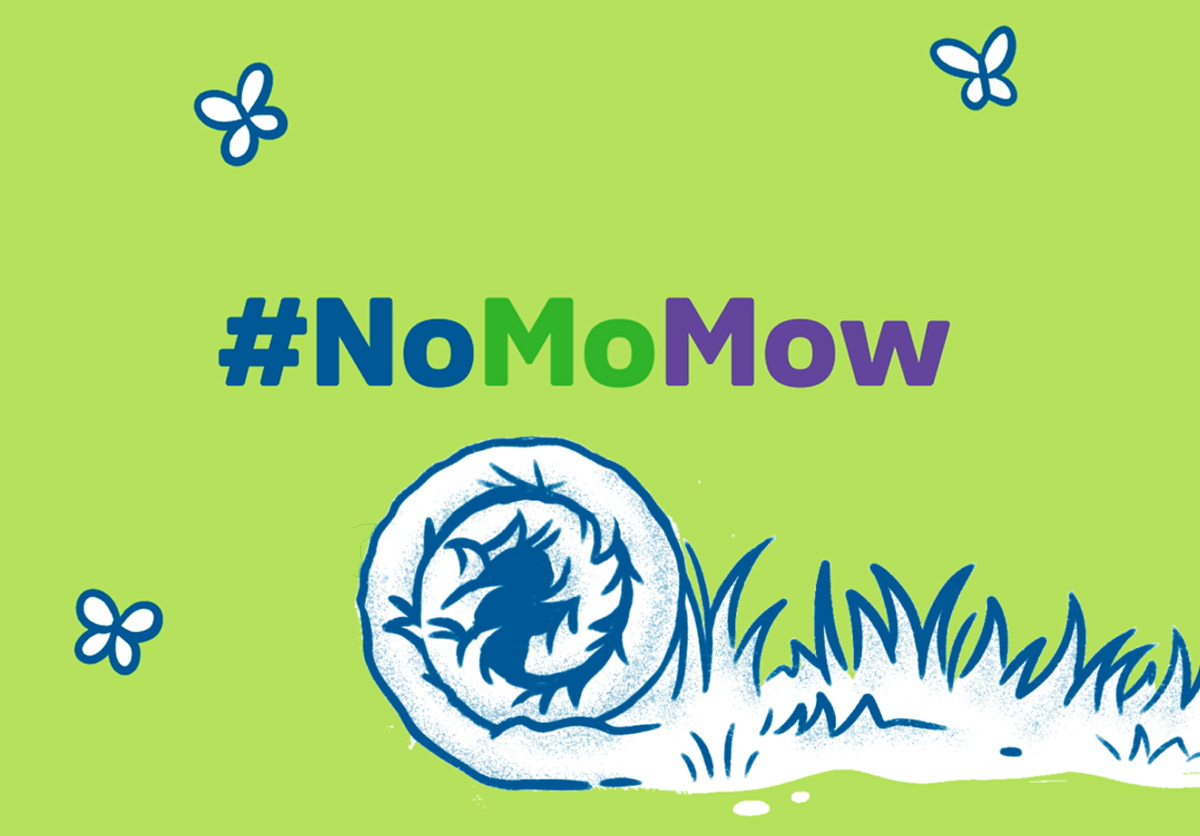 We'll pay you to remove your lawn.
We'll pay you to remove your lawn.
Help California save water by replacing your grass with water-efficient landscape. Say goodbye to the hassle, maintenance, and expense of lawns - and say hello to a beautiful outdoor living space!
Artificial turf is not eligible for the rebate. Program terms and conditions are subject to change. View current terms and conditions.
Apply by Sept. 1
Plan in the summer, plant in the fall!

Residential
Customers
• Receive $5 per square foot for removing lawn using potable water.
• Receive $3 per square foot for removing lawn using recycled water.
Capped at max of 5,000 sq.ft.; 250 sq.ft. minimum

Commercial
Customers
• Receive $5 per square foot for removing lawn using potable water.
• Receive $3 per square foot for removing lawn using recycled water.
Capped at max of 50,000 sq ft per fiscal year

Public Agency
Customers
• Receive $4 per square foot* for removing lawn using potable or recycled water.
Capped at max of 200,000 sq.ft.per fiscal year
*For a limited time, public agency sites may be eligible to receive an enhanced funding of an additional $1 per square foot. Contact IRWD for details.
 Tree rebate
Tree rebate
Turf Replacement participants may be eligible to receive $100 per new tree installed (maximum of 5 trees) as part of their turf replacement project. View the Turf Replacement Program's terms and conditions for details.
Note: Customers may be eligible for the tree rebate only if they are participating in the Turf Replacement Program.
Replace your lawn with a dream design
Frequently asked questions
Recycled water is defined in the California Water Code as “…water which, as a result of treatment of waste, is suitable for a direct beneficial use or a controlled use that would not otherwise occur and is therefore considered a valuable resource. Basically, recycled water is highly treated wastewater that is reused for purposes such as agricultural and landscape irrigation, industrial processes, toilet flushing, or replenishing groundwater basins.
Yes, there are different types of recycled water based on the level of treatment the water has gone through. The state regulates how recycled water can be used based on the level of treatment. Recycled wastewater undergoes primary, secondary and tertiary treatment at water reclamation plants. During primary treatment, large solids are removed. Secondary treatment uses bacteria to remove approximately 90% to 95% of the remaining solids and uses a disinfectant, such as chlorine, to destroy bacteria, viruses, and other pathogens. For some reuse applications, advanced tertiary treatment processes, such as filtration or reverse osmosis, are required. The treatment processes duplicate and accelerate nature’s own purifying actions. Tertiary treated recycled water, often called Title 22 water, can be used for a wide variety of non-potable uses including all types of irrigation, toilet flushing, and industrial processes. IRWD produces and distributes disinfected, tertiary treated recycled water. Advanced treated recycled water utilizes new technology to produce purified recycled water that can be used for groundwater recharge. Locally, the Orange County Water District is producing and using advanced treated recycled water from the Groundwater Replenishment System to supplement water supplies in the Orange County Groundwater Basin.
The State has identified approved uses for recycled water in California based on the level of treatment. IRWD produces and distributes disinfected, tertiary treated recycled water, also known as Title 22 water. Title 22 water can be used for a wide variety of non-potable uses. In IRWD's service area we use recycled water for landscape and agricultural irrigation, toilet flushing and cooling towers in commercial buildings, and industrial processes such as carpet dyeing, concrete production and composting. Every gallon of recycled water used for these purposes saves a gallon of drinking water.
If you are interested in connecting to our recycled water system and think your property may be eligible, please contact Mark Tettemer, Recycled Water Manager at 949-453-5592 or tettemer@irwd.com, to discuss your options. Additional information can be found in Section 5 of IRWD's Procedural Guidelines.
Yes. There are a variety of laws, regulations and statewide policies that govern how recycled water is defined, what it can be used for, and under what conditions in the State of California. Title 22 of the California Code of Regulations describes the treatment requirements for recycled water as well as the approved uses based on the level of treatment. Also included in Title 22 are the use area requirements which describe restrictions on its use and the requirement to notify the public through signage that a site is using recycled water. Title 17 of the California Code of Regulations describes the backflow devices required at a site when recycled water is being used. This is to prevent recycled water from getting into the public distribution system in the event a cross-connection occurs at a site where recycled water is used. IRWD also extensively monitors, tests, and reports on the recycled water we produce and distribute for use.
Recycled water is delivered through a distribution system that is completely separate from the drinking water infrastructure. This separate system uses what is known internationally as “purple pipe” to keep these valuable sources of water separate and make the recycled water system easily identifiable. The use of purple pipe infrastructure helps to minimize cross-connections between the two systems. In fact, IRWD pioneered the use of purple piping which has become the international symbol for recycled water.
Recycled water is wastewater treated to approved levels for reuse for approved non-potable uses which are primarily landscape irrigation but can include industrial applications such as cooling tower make-up water. Graywater is defined in the California Water Code as “…untreated wastewater which has not been contaminated by any toilet discharge has not been affected by infectious, contaminated, or unhealthy bodily wastes, and which does not present a threat from contamination by unhealthful processing, manufacturing, or operating wastes. Graywater includes wastewater from bathtubs, showers, bathroom washbasins, clothes washing machines, and laundry tubs but does not include wastewater from kitchen sinks or dishwashers.” Graywater can only be used to irrigate landscaping at the site from which the graywater is generated and can only be done using a subsurface irrigation system. IRWD does not exercise jurisdiction over customer-owned graywater systems.
On May 19, 2016, the California Department of Toxic Substances Control issued a report to Irvine Unified School District regarding a soil assessment of the Portola High School site. Page 32 of the final report contains the statement that “low concentrations of some of the VOCs detected in the soil gas samples including chloroform and dibromochloromethane may be a result of the chlorination of the recycled water.” Chloroform and dibromochloromethane are common, regulated constituents that can be produced during the water disinfection process, and trace levels could be present in IRWD's recycled water. These low levels are well within the stringent limitations established by the California State Water Resources Control Board for safe water reuse under Title 22 of the California Code of Regulation. IRWD recycled water is rigorously monitored and consistently remains within these standards. IRWD recycled water is safe for all permitted uses and applications.
Got more questions? Call our Water Use Efficiency Department at (949) 453-5581 or email WaterEfficiency@IRWD.com
Participation in rebate programs could be discoverable under the California Public Records Act.



 We'll pay you to remove your lawn.
We'll pay you to remove your lawn. Tree rebate
Tree rebate